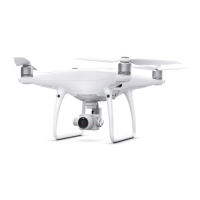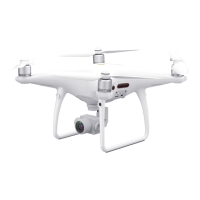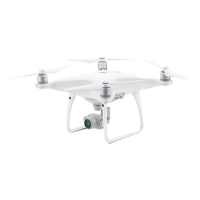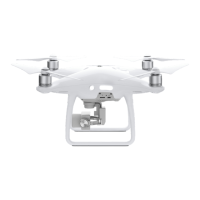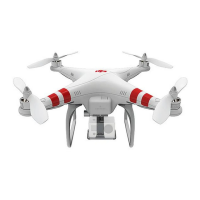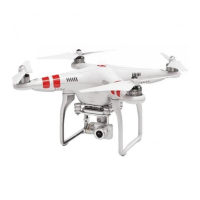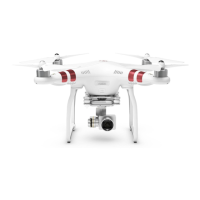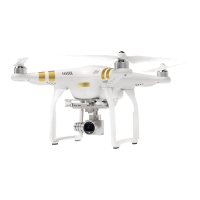©
2018 DJI All Rights Reserved.
61
Phantom 4 RTK User Manual
It is important to understand basic ight guidelines, for the safety of both you and
those around you. Do not forget to read the Disclaimer and Safety Guidelines.
Flight Test
Takeo/Landing Procedures
1. Place the aircraft in an open, at area with the battery level indicators facing towards you.
2. Turn on the remote controller and then turn on the Intelligent Flight Battery.
3. Launch the DJI GS RTK app and tap Fly.
4. Wait until the Aircraft Status Indicators start to blink green slowly, which indicates that GNSS or RTK is in
use. If using RTK, ensure that the RTK function is enabled and that the RTK/GNSS signal strength icon
shows FIX. Then perform CSC to start motors.
5. Push the left stick up slowly to take o.
6. To land, hover over a level surface and gently pull down on the left stick to descend.
7. After landing, hold the left stick at its lowest position until the motors stop.
8. Turn o the Intelligent Flight Battery rst, then the remote controller.
When the Aircraft Status Indicators blink yellow rapidly during ight, the aircraft has entered Failsafe
mode.
A low battery level warning is indicated by the Aircraft Status Indicators blinking red slowly or rapidly
during ight.
Watch our video tutorials for more ight information.
Video Suggestions and Tips
1. Go through the full pre-ight checklist before each ight.
2. Select the desired gimbal operation mode in the app.
3. Only shoot photos or record videos when ying in P-mode.
4. Always y in good weather conditions and avoid ying in rain or heavy wind. An ND lter can be used
when the operating environment is too bright.
5. Choose the camera settings that suit your needs. Settings include ISO, exposure values, etc.
6. Perform ight tests to establish ight routes and preview scenes.
7. Push the control sticks gently to keep the aircraft’s movement smooth and stable.

